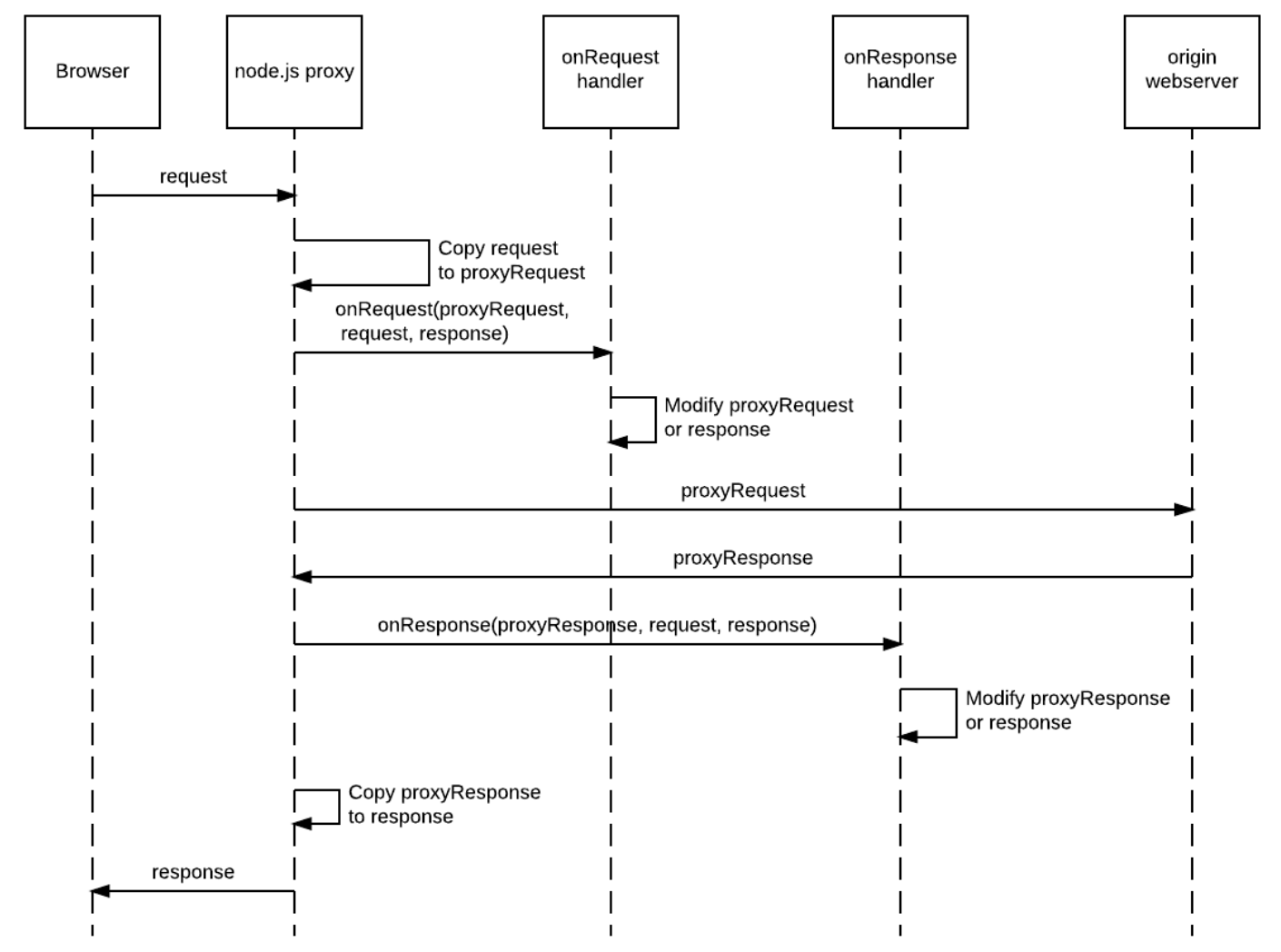Node.js Proxy Handlers
To make it easier to manipulate requests and responses, we use a simple chaining of javascript ‘handler’ objects, each object fixing a particular vulnerability.
The onRequest and onResponse handlers can modify the data sent to or from the origin webserver.

A minimal handler object looks like this:
exports.onRequest = function (options) {
return function exampleOnRequest(proxyRequest, request, response, options) {
// Code goes here
}
}
exports.onResponse = function (options) {
return function exampleOnResponse(proxyResponse, request, response, options) {
// Code goes here
}
}
To include it in your code, you will first require the module:
var example = require('./example');
And then attach it to the proxy object:
reverseProxy.proxy.on('proxyReq', example.onRequest());
reverseProxy.proxy.on('proxyRes', example.onResponse());
The order that handlers are attached the proxy matters - requests are processed in the same order they are attached.